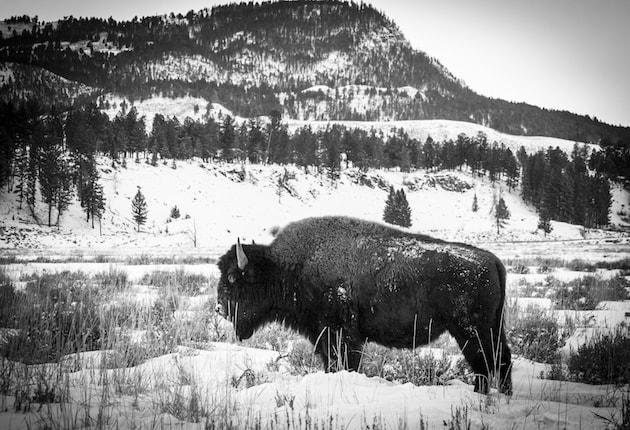Yellowstone National Park officials met with representatives of the American Indian Tribes, the state of Montana, and the federal government Thursday to discuss a planned cull of the park’s bison herd. If the cull proceeds as expected, 1,000 bison will be removed over the winter through hunting, slaughter, or capture to reduce the population living within the national park’s boundaries.
The herd has continuously grown since 2000, with 1,900 bison that year and 3,500 in 2005. Culls were initiated, with numbers dropping back to 1,400 in 2013.
Despite ongoing culls, there were roughly 5,000 bison across Yellowstone this summer — immediately following an aggressive culling in the winter of 2014-15. Park officials were able to remove 737 animals, but fell short of the targeted 900.
More than 8,000 have been killed since the 1980s — nearly 2,000 by hunters — yet the population continues to grow. Officials expect the targeting of cows and calves to stem reproduction and finally make a dent in the bison’s numbers.
Hunters, including native hunters from tribes with treaty rights to some unmanaged federal lands, will kill an estimated 300 animals, with others used for research.
“They are a hardy species,” Stephanie Adams with the National Parks Conservation Association told the New York Post. “But until there’s more room for bison to range beyond [the] park boundary, we’re going to have to rely on larger numbers of bison being sent to slaughter.”
Many Montanans don’t want the bison to wander away from the park or be intentionally relocated because of the threat of brucellosis. There are more cows than people in Montana, and with a sizable chunk of the state’s agricultural income coming from cattle, the chance of it spreading isn’t something the state’s residents are willing to take.
“If there was more tolerance north of the park in Montana for wildlife, particularly bison as well as other wildlife, to travel outside the park boundaries, it wouldn’t be an issue,” said Yellowstone spokeswoman Sandy Snell-Dobert.
Montana and the federal government reached an agreement in 2000 requiring the state to cull bison in order to prevent the disease’s potential spread. Entitled the Interagency Bison Management Plan, the guidelines stipulate that bison remain in Yellowstone — one hoof over the line is unacceptable. Bison don’t require physical contact to transmit the disease to cattle; grazing on empty land with cattle following after can pass brucellosis as well.

